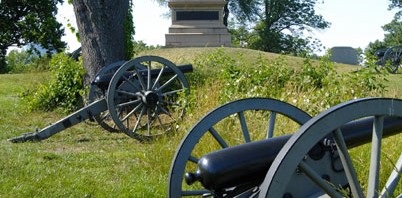
Planning Your Gettysburg Getaway
February 21, 2018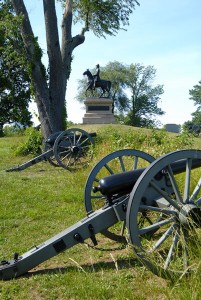 Winter, spring, summer or fall, there’s never a bad time to pay a visit to Gettysburg! No matter what time of year you decide to make your trip to our historic town, we can help you plan that next Gettysburg getaway with some helpful resources:
Winter, spring, summer or fall, there’s never a bad time to pay a visit to Gettysburg! No matter what time of year you decide to make your trip to our historic town, we can help you plan that next Gettysburg getaway with some helpful resources:
Gettysburg Foundation – www.gettysburgfoundation.org
The Gettysburg Foundation operates in conjunction with the National Park Service to preserve Gettysburg National Military Park and the Eisenhower National Historic Site. They also play a significant role in educating the public about these sites and our democracy by providing a look into how Gettysburg played a key role in shaping our country.
The Gettysburg Foundation’s website provides useful links to help you plan your visit, purchase tickets to attractions or bus tours, browse the events calendar, and plan a trip for your students, team, scouts, or other youth group.
Museum and visitor hours are 9am-5pm daily, and the address is 1195 Baltimore Pike. You can reach the Gettysburg Foundation by phone at 717-338-1243.
Gettysburg National Military Park – www.nps.gov/gett
Lesser Known Civil War Celebrities – John Burns
November 10, 2017 Depending on who you talk to, John Burns may not fully qualify for our “Lesser Known” series, but we’ve seen plenty of visitors who are unfamiliar with the story of Mr. Burns. For those of you who fit this description, we share the story of the man whose statue stands on McPherson’s Ridge here in Gettysburg, a statue commissioned by the State of Pennsylvania in 1903.
Depending on who you talk to, John Burns may not fully qualify for our “Lesser Known” series, but we’ve seen plenty of visitors who are unfamiliar with the story of Mr. Burns. For those of you who fit this description, we share the story of the man whose statue stands on McPherson’s Ridge here in Gettysburg, a statue commissioned by the State of Pennsylvania in 1903.
John Burns was born in Burlington, New Jersey on September 5, 1793. While the details of most of his early life are unknown, his story typically picks up with his enlistment in the War of 1812 where he fought in numerous battles, including one of the bloodiest battles of the war – the Battle of Lundy’s Lane.
Following that war, Burns worked at a variety of vocations in Gettysburg, including boot and shoemaker, carriage salesman, and town constable. He seems to have lived a quiet life until the Civil War broke out in 1861.
Now in his late 60s, Burns once again felt the call to duty, and attempted to enlist in the Union army. Not surprisingly, he was turned away from combat duty due to his age, and was also denied admission to the reserves. Determined not to be denied his chance to serve, Burns worked as a Union teamster until he was sent home against his will.
As the town constable in 1863, Burns didn’t take too kindly to Confederate Major General Jubal Early’s arrival with his cavalry in June, and was eventually jailed for resisting Early. Released just two days later as the Confederates moved on, Burns was even more fed up.
Two days later, on June 30, Union Brigadier General John Buford arrived, and Burns was happy to reveal the Confederate army’s recent activities. Buford then remained in Gettysburg, and on the morning of July 1 the Confederate infantry attacked Buford’s cavalry as the Battle of Gettysburg began.
On that fateful morning, Burns felt his calling once more, grabbed his flintlock musket and powder horn and headed towards the battle to the west of Gettysburg. Fortunately for Burns, he passed two wounded Union soldiers who were on their way back to town, and he was able to talk one of them into giving him a more modern rifle and some ammunition.
Burns eventually ran into Major Thomas Chamberlain of the 150th Pennsylvania Infantry, and requested to join the fight. Chamberlain referred Burns to regimental commander Colonel Langhorne Wister, who agreed to send Burns into the woods beside the McPherson Farm where he’d fight alongside the 7th Wisconsin Infantry and also the 24th Michigan.
Burns fought with the infamous Iron Brigade all afternoon, where he performed as a sharpshooter. Suffering wounds throughout his body, Burns was left behind as Union soldiers began to withdraw.
Burns knew he was in danger and crawled away from his rifle and buried any remaining ammunition before passing out due to blood loss. Confederate troops eventually came across Burns, and asked who he was. As he was dressed in civilian clothes, Burns was said to have told them he was trying to get to a nearby farm seeking help for his sick wife (or in search of his missing cows), but he was unfortunate and got caught in the crossfire. While the troops didn’t believe him, they let him live, and eventually Burns returned home to recover.
Burns’ heroic story quickly spread, and famed photographer Mathew Brady captured shots of Burns during a visit to Gettysburg. President Abe Lincoln also met with Burns during the visit where he delivered the Gettysburg Address. There were poems, books, and monuments dedicated to Burns.
John Burns died in February of 1872 of pneumonia, and is buried in Evergreen Cemetery in Gettysburg next to his wife.
Gettysburg Tours – Group Itineraries for Student & Scout Groups
September 19, 2017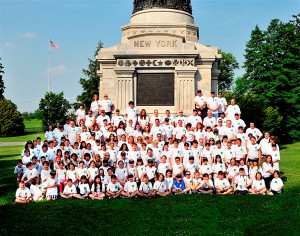 Planning trips for students, scout groups, youth groups, or any other groups of young people can be a headache! Let Gettysburg Group Reservations ease the pain by helping to plan your next group tour to Gettysburg.
Planning trips for students, scout groups, youth groups, or any other groups of young people can be a headache! Let Gettysburg Group Reservations ease the pain by helping to plan your next group tour to Gettysburg.
This is the final installment of our special group itineraries series. Be sure to check out part one – Gettysburg group itineraries for all interests and part two – Gettysburg group itineraries for adults and seniors. If you’d like to learn more about any of our group tours for student and scout groups, just click on the tour name below or feel free to give us a call for more info.
This tour takes your group through what it was like to be a soldier and a civilian during a major turning point in the Civil War. Discover how the men trained before battle, learn to drill like a soldier, then walk Pickett’s Charge with a licensed guide. After enjoying lunch, tour the streets of Gettysburg with licensed town historians who share how the battle left its mark on the community. The kids will love ending the day with a presentation and historic speech by the one and only Abraham Lincoln!
As the name suggests, this tour makes history fun! Sit atop our famous double decker bus and enjoy a two-hour tour through the gorgeous countryside and historic town buildings that have stood the tests of time and war. From here, you can tour the Gettysburg National Military Park Visitor Center and the famous Cyclorama. Don’t forget about the diorama at the Gettysburg History Center, which allows the kids to get a full image of what the entire battlefield looked like. Round the day out with an exciting ghost tour in a haunted house!
We know most student groups visiting Gettysburg are limited on time, which is why we’ve put together this special itinerary to let them experience most of what Gettysburg has to offer in just five hours. This tour begins with a visit to the Gettysburg National Military Park Visitor Center, where students can enjoy a film, the famous Gettysburg Cyclorama, and the museum itself. Following this stop, students will enjoy a boxed lunch from a local restaurant in the group picnic area, then head off on our famous two-hour licensed battlefield bus tour. Learn more about the famous battle from a dedicated historian and walk the very ground where the fighting took place.
Take your scout group on a multi-day adventure with this four-day, three-night adventure! Start by setting up camp and enjoying dinner and listening to some haunted Gettysburg tales told around your campfire. Try to get some sleep, though, as the second day is filled with a historic three-mile Gettysburg trail hike and a tour of the Gettysburg Heritage Center and Diorama. Day three begins with another hike, this time on the 10-mile Billy Yank trail, and then during the afternoon you can get some rest while riding our double decker bus for a battlefield tour. Your scout trip concludes on day four with a four-mile hike on the Johnny Reb trail, lunch at the Gettysburg National Military Park Visitor Center Refreshment Saloon, and a recruitment at the Seminary Ridge Museum to “Become a Soldier.”
The best part about these sample itineraries is that they are fully customizable. For teachers, chaperones, and other leaders, there’s even this helpful Gettysburg field trip planner put together by the Gettysburg National Military Park, which can help you prepare for the best field trip ever! We’ll be happy to help you plan by discussing options for your group tour of Gettysburg. To get started, give Gettysburg Group Reservations a call at 717-334-6020 or 1-800-447-8788.
Gettysburg Tours – Group Itineraries for Adults and Seniors
July 19, 2017 Let Gettysburg Group Reservations take the headache out of planning your next group tour to Gettysburg! We help plan military and family reunions, girlfriends’ getaways, and romantic retreats for you and your spouse.
Let Gettysburg Group Reservations take the headache out of planning your next group tour to Gettysburg! We help plan military and family reunions, girlfriends’ getaways, and romantic retreats for you and your spouse.
This is the second in our special group itineraries series. Be sure to check out part one – Gettysburg group itineraries for all interests. If you’d like to learn more about any of our group tours for adults and seniors, just click on the tour name below or feel free to give us a call for more info.
Need an idea for your family, class, or military reunion and not sure where to start? We’ve got a full day’s worth of excitement packed into our Gettysburg Reunion tour. Starting at the Gettysburg National Military Park with a tour of the museum, galleries and cyclorama, you’ll then move to the Eisenhower National Historic site to tour the home of our 34th president, then stop for lunch at the historic Dobbin House. The afternoon includes a licensed guided battlefield bus tour and a stop at the Jennie Wade House (the home of the only civilian killed during the Battle of Gettysburg). Round out your day with a tour and tasting at the Mason Dixon Distillery, a visit to the Seminary Ridge Museum, and dinner at Hickory Bridge Farm.
Lesser Known Civil War Celebrities – Mathew Brady
May 22, 2017 One of our favorite things to do with our social media pages is to scroll through the dozens of photos guests share when they visit Gettysburg. Some of the views guests capture from atop one of our double decker tour buses are incredible, and even after all these years we still find ourselves amazed by each unique photo that our visitors capture.
One of our favorite things to do with our social media pages is to scroll through the dozens of photos guests share when they visit Gettysburg. Some of the views guests capture from atop one of our double decker tour buses are incredible, and even after all these years we still find ourselves amazed by each unique photo that our visitors capture.
Thanks to the father of photojournalism Mathew Brady’s own vision, and the photographs he commissioned, we’re also able to appreciate the realness of the carnage from the Civil War, the people involved, and other images of the time.
Mathew Brady was born in 1822, although the exact location of his birth remains uncertain. It was most likely he was born in Warren County, New York, although census records and his own account claim he was born in Ireland.
In his late teens, Brady met up with portrait painter William Page and Page’s former teacher Samuel F. B. Morse. Better known for inventing the telegraph and developing Morse Code, Morse was a professor at New York University who taught art, painting, and design, and he took Brady under his wings. Here, Brady learned Morse’s process of creating a mirror image on a silver-surfaced copper plate, a process known as daguerreotype and named after Frenchman Louis Daguerre.
Using his new training, Brady eventually moved on and opened his own studio in New York City, where he photographed many famous people, including Andrew Jackson and John Quincy Adams, and collected numerous awards for his work.
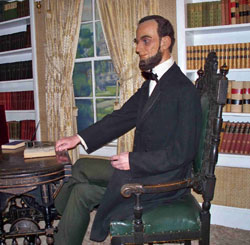 As the Civil War broke out, due to his connections Brady reached out to President Lincoln for permission to travel to battle sites to document the war. Financed with his own funds, Brady hired a staff of photographers to help capture the essence of the war. He supervised and organized all activities of his team, and many of the photos from this time, including the First Battle of Bull Run, Antietam, and the Battle of Gettysburg, were thanks to his and his team’s efforts.
As the Civil War broke out, due to his connections Brady reached out to President Lincoln for permission to travel to battle sites to document the war. Financed with his own funds, Brady hired a staff of photographers to help capture the essence of the war. He supervised and organized all activities of his team, and many of the photos from this time, including the First Battle of Bull Run, Antietam, and the Battle of Gettysburg, were thanks to his and his team’s efforts.
One obvious challenge for Civil War photographers was that the battles weren’t scheduled, so the photographers couldn’t plan to be present when the fighting started, and getting to a distant site would usually take longer than the fighting would last. Brady did come to Gettysburg, but not until about 2 weeks after the battle.
Unfortunately, the cost of his Civil War project quickly drove Brady into debt, and the public’s interest in the collection was dim due to the harsh realities of war and the population’s lack of interest in reliving the hell their fellow men and their families went through. Brady had expected the government to buy the photographic plates that he had created, and when the government declined to do so, he had to sell his New York studio and go into bankruptcy.
Mathew Brady died in a charity ward in 1896, but without his contributions we would be missing some of the most iconic imagery of the times. The truth is, you likely are in possession of some of Brady’s work at this exact moment. If you have a penny and/or five dollar bill, one of Brady’s photographs of Lincoln was used for these bills!
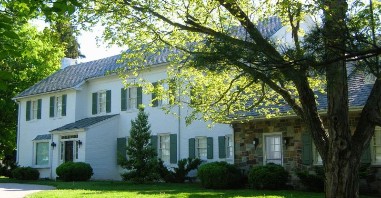
Gettysburg Tours – Group Itineraries for All Interests
April 6, 2017Planning a group tour of Gettysburg doesn’t have to be overwhelming! Gettysburg Group Reservations makes it easy to help plan your military and family reunions, Boy and Girl Scout outings, or other group event.
This is the first of our special group itineraries series, and we’ll start by discussing some group tour options. If you’d like to learn more about any of these, just click on the tour name or feel free to give us a call for more info.
5-Star General Experience In Gettysburg
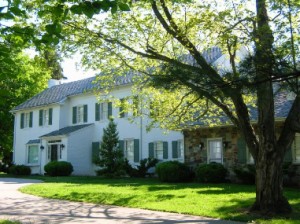 This tour is perfect for anyone interested in interested in the military, President Eisenhower, or the history of Gettysburg. Included in this package is a tour of the Eisenhower National Historic Site, a tour of the US Army Heritage and Education Center, and a 90-minute history walk with a licensed town historian through downtown Gettysburg. Top off your day with a planned lunch or dinner, or visit other interesting sites like the National Cemetery.
This tour is perfect for anyone interested in interested in the military, President Eisenhower, or the history of Gettysburg. Included in this package is a tour of the Eisenhower National Historic Site, a tour of the US Army Heritage and Education Center, and a 90-minute history walk with a licensed town historian through downtown Gettysburg. Top off your day with a planned lunch or dinner, or visit other interesting sites like the National Cemetery.
Farm to Palate in Greater Gettysburg, PA
One of the new featured itineraries for this year takes your group from the farm to the table. Beginning at Eisenhower National Historic Site you’ll explore the Eisenhowers’ home, grounds and show barn that housed award-winning Black Angus cattle. After your trip to the farm you can stop at Reid’s Orchard & Winery, take a tour through Oyler’s Organic Farms, and visit the Hollabaugh Bros. Fruit Farm & Market. Don’t forget a stop at the new Mason Dixon Distillery, and be sure to end your day at the Shriver House Museum now that you better understand what civilian life was like in Gettysburg during the Civil War.
We always recommend spending more than just one day in Gettysburg because there’s just so much to see and do. This group tour offers two days packed full of history to give you the opportunity of experiencing the Battle of Gettysburg from both sides. Visit the Seminary Ridge Museum, take a bus tour with a licensed guide, tour the Jennie Wade House, and enjoy a ghost tour – all in day one! Round out your group visit on the second day with a trip to the Gettysburg National Military Park Visitor Center, a stop at the Shriver House, listening to a Union soldier’s experience at the, and paying your respects at the Gettysburg National Cemetery.
Experience both sides of the war in just one day in another new group tour option we’ve added this year. Your day will begin in Gettysburg and cover some of the key events and locations in the Battle of Gettysburg. From here you’ll head to Antietam (Sharpsburg) and explore the location of another one of the bloodiest battles in the Civil War.
Leave Gettysburg with a better understanding of how the battle was fought with the Billy Yank day trip. Tour the Seminary Ridge Museum, take a Gettysburg bus tour with a licensed battlefield guide, stop by the Gettysburg Heritage center, and round out the day with a stop in Emmitsburg, Maryland for dinner at the Historic Carriage House Inn, after which you’ll see a living history presentation by a union soldier, a general and his wife, or President Lincoln.
If you’re curious how civilians lived during the Civil War, the Civilian Experience is perfect for you. Featured in this group tour is a viewing of the Cyclorama, a guided tour through historic Gettysburg, a meal in one of Gettysburg’s historic Civil War era buildings, stops at historic homes for tales from the families who coped during those frightful three days of fighting, and a stirring presentation from a Union or Confederate soldier.
The Rebel Yell was incredibly distinct and was used to intimidate Union soldiers as well as rally and boost the morale of Confederate troops. See what the battle of Gettysburg was like with a focus on the Confederate perspective. This itinerary includes a visit to the Gettysburg National Military Park Visitor Center, a viewing of the famous Cyclorama, a ride with a licensed battlefield guide on our tour buses, a stop at the Gettysburg Heritage Center, and dinner at the Fairfield Inn, one of the area’s oldest taverns where Robert E. Lee dined during his retreat on July 4th 1863.
The best part about these sample itineraries is that they are all fully customizable, and we’d be more than happy to help discuss interests and options for your group trip to Gettysburg. To get started, give Gettysburg Group Reservations a call at 717-334-6020 or 1-800-447-8788.
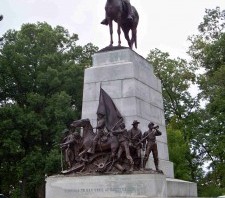
Famous Civil War Horses
May 12, 2016In honor of this month’s Kentucky Derby, as well as the upcoming Preakness and Belmont Stakes, we thought now would be a perfect time to dive into some of the famous horses of the Civil War. Many know about the great men who made their mark on the war, but few know the stories of their trusted companions.
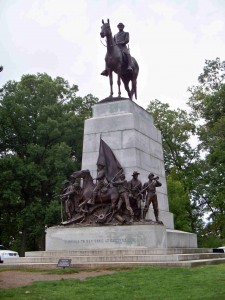
One of the primary means of transportation during the war, horses played an important role in the war effort. We compiled a list of several of the most famous Civil War horses that joined both the north and south in the war effort and we encourage you to learn more about them below.
- Cincinnati – General Ulysses S. Grant’s favorite horse can be found with him at the Ulysses S. Grant Memorial in Washington D.C. Gifted to Grant on the terms that the horse never goes to an owner who would treat it poorly, Cincinnati was the horse Grant rode to negotiate Lee’s surrender at Appomattox Court House.
- Traveller – Like Cincinnati with Grant, Traveller was Robert E. Lee’s favorite horse. The Virginia monument here in Gettysburg features Lee and Traveller. Lee bought the horse shortly after taking a liking to him, and the horse was a trusted companion the rest of Lee’s life.
- Old Baldy – Affectionately named for his white face, Old Baldy was George C. Meade’s horse of choice. Old Baldy had quite a decorated war service, as he was wounded several times, including being shot through the neck at the Battle of Antietam. Fortunately the horse survived each time, and eventually retired to a horse farm near Philadelphia. Today you can find the horse’s head displayed in a glass case in the Meade Room of the Civil War Museum of Philadelphia.
- Winchester (Rienzi) – Initially named Rienzi by owner Phil Sheridan after the Mississippi town his troops were encamped at, the horse was later renamed Winchester following the storied ride from Winchester, Virginia to Cedar Creek. Featured in a poem by Thomas Buchanan Read, which described the powerful and indestructible (it was shot numerous times and always seemed to bounce back) horse carrying a fierce man into battle. Winchester may also have helped Lincoln win re-election. Today, you can find a mounted Winchester at the Smithsonian in Washington D.C.
Humans weren’t the only valiant participants of the war. This brief list provides just a glimpse of the horses and their stories that were a part of the Civil War. On your next visit to Gettysburg, be sure to take notice how many monuments also feature their trusted companions.
Some others we didn’t feature above include Fancy, Kentuck, King Philip, Lancer, Moscow, Rambler, and Tammany. The list is quite extensive, but if you have any favorites to add to the list be sure to leave us a comment below!
Gettysburg Bus Tour FAQ’s
March 15, 2016 Spring begins this weekend and soon our bus tours will be out in full force leading numerous history enthusiasts throughout the Gettysburg Battlefield. Traveling the historic fields of Gettysburg with one of our friendly licensed battlefield guides provides visitors with a unique experience that brings history to life.
Spring begins this weekend and soon our bus tours will be out in full force leading numerous history enthusiasts throughout the Gettysburg Battlefield. Traveling the historic fields of Gettysburg with one of our friendly licensed battlefield guides provides visitors with a unique experience that brings history to life.
We often get a few questions about our tours, so we decided to put together this quick Q&A section to hopefully cover anything you may want to ask. We hope you find this list helpful as well.
- How long are the Gettysburg bus tours?
- Our bus tours are two hours and board five minutes before the scheduled time. Departure is from the Gettysburg Tour Center at 778 Baltimore Street, which is across from the National Cemetery.
- What do the bus tours cover, and what do we see?
- On your trip we will cover all three days of battle as we travel through the Gettysburg Battlefield.
- Do you get off the bus during your tour?
- We make at least one restroom and refreshment stop. If you’ve chosen one of our licensed guided tours we leave the scenic stop option up to your guide to determine where it will be. Sometimes you may make more than one scenic stop. If you choose the dramatized audio bus tour, your scenic stop will be at Little Round Top.
- Where can I book a tour?
- Reservations can be made by calling our toll free number at 877-680-8687. You can also purchase them online through our “Schedule a Tour” link above that takes you to a helpful calendar that lists all the tours that are available.
- Do you offer group tours (for schools, teams, organizations, etc)?
- We certainly do! Group tours can be booked through Gettysburg Group Reservations at 800-447-8788. You can learn more through the “Plan Your Trip” link on our website.
- What are the different bus tour options?
- We offer three different types of bus touring options. These include the licensed guided bus tour (in an enclosed bus with heat or air-conditioning depending on the time of year), a licensed guided double decker tour (weather permitting), or a dramatized audio bus tour (weather permitting on our famous double decker tour bus).
We hope this list covers all of the questions you may have had about Gettysburg Bus Tours, but we also understand you may have more. If any of your questions remain unanswered feel free to leave a comment below or contact us and we’ll be happy to answer them for you!
26th North Carolina Infantry
March 10, 2016 Many visitors that come to Gettysburg question why there are so few confederate markers on the field. There are a number of reasons – #1 it was a confederate defeat #2 after the war the South was unable to financially channel many funds toward memorials and #3 the North plain & simple really didn’t want them here.
Many visitors that come to Gettysburg question why there are so few confederate markers on the field. There are a number of reasons – #1 it was a confederate defeat #2 after the war the South was unable to financially channel many funds toward memorials and #3 the North plain & simple really didn’t want them here.
One of the few markers here at Gettysburg that honors Confederate soldiers can be found on Meredith Ave. in Reynold’s Woods & belongs to the 26th North Carolina Infantry. Engaged with the Union Iron Brigade on July 1st, this unit suffered very heavy casualties. They would lose a total of 588 men which would be the greatest numeric loss of any Confederate unit during the battle. They would also participate in Pickett’s Charge on July 3rd & a companion marker can be found at the Angle which notes their position on that day.
Their memorials were dedicated on October 5, 1985.
Breakdown of Army Units for both North and South
February 12, 2016Sometimes the visitor to the battlefield has difficulty trying to grasp the sheer numbers of men that were here during the battle. Here is a breakdown of the army units for both North & South.
Union Confederate
Company
35-40 35-40
Regiment
@310 @340
Brigade
@1415 @1550
Division
@3875 @6775
Corps
@11,100 @22,000
Total at Gettysburg
@93,000 @75,000
